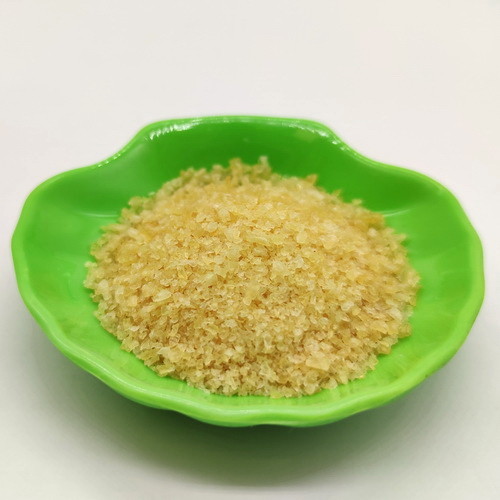

Nagai and Suzuki 7 reported that fish skin contains a large amount of collagen. In fish processing industry, fish skin is considered as a major by-product that causing pollution could provide a valuable source of gelatin 6.

It is also used in encapsulation of different drug products 3-5. In cosmetic and health care products, gelatin is used as a gelling ingredient in face creams, body lotions, shampoos, hair sprays, sun screens and bath salts and bubbles 2. It is widely used in food, pharmaceutical, cosmetic and photographic applications because of its unique functional and technological properties 1. It is tasteless and colourless solid substance derived from the fibrous protein collagen. Introduction Gelatin is one of the most popular biopolymers. This review summarizes gelatin in four areas: (1) pig gelatin and halal issue, (3) selected methods used in fish gelatin extraction, (3) selected functional properties of fish gelatin and (4) selected pharmaceutical and medical application of fish gelatin. In the last decades, the rising interest in halal products issues for Muslim populations become one of the main reasons for exploring different types of collagen and gelatin from different animal sources. Fish gelatin represents one of the important types of gelatins from other sources rather than mammalian gelatins and it may thus be considered as an alternative to mammalian gelatin for use in various food and pharmaceutical applications. It was reported that about 41% of the gelatin produced worldwide is basically from pigskin. Most commercial gelatin is presently sourced from beef bone, hide and pigskin and bones. Its applications in food manufacturing are very wide-ranging including enhancing the elasticity, firmness and consistency of food products. The demand for gelatin for food and pharmaceutical application is increasing because it is one of the most widely used food ingredients. Reliability of gelatin authentication methods is challenged mostly by transformation of gelatin during processing and close similarities These methods are time consuming, and require capital intensive equipment with huge running cost. Seven gelatin authentication methods that have been developed include: nucleic acid based, immunochemical, electrophoretic analysis, spectroscopic, mass-spectrometric, chromatographic-chemometric and chemisorption methods. Interest in source gelatin authentication is based on religious and cultural beliefs, food fraud prevention and health issues. Abstract: Gelatin is a very popular pharmaceutical and food ingredient and the most studied ingredient in Halal researches.

Kajian ini mengulas secara ringkas penemuan-penemuan dan cabaran-cabaran dalam bidang penyelidikan ini dan menyediakan cadangan untuk lebih banyak penyelidikan mengenai perkembangan kaedah pengesahan (autentikasi) yang pantas dan gelatin yang telah berubah akibat pemprosesan. Keberkesanan kaedah pengesahan (autentikasi) gelatin adalah suatu cabaran besar disebabkan oleh transformasi gelatin semasa pemprosesan dan persamaan rapat diantara struktur gelatin. Kaedah-kaedah ini memakan masa dan memerlukan peralatan bermodal intensif dengan kos yang besar. Tujuh kaedah pengesahan (autentikasi) gelatin yang telah dilaksanakan termasuk kaedah: berasaskan asid nuklik, imunokimia, analisis elektroforetik, spektroskopi, spektrometrik massa, kaedah kromatograf-kimometrik dan serapan kimia. Asas galakan untuk diadakan pengesahan (autentikasi) sumber gelatin adalah disebabkan kepercayaan agama dan budaya, pencegahan penipuan makanan dan isu kesihatan. Abstrak: Gelatin adalah bahan farmaseutikal dan makanan yang sangat terkenal serta menjadi ramuan yang paling banyak dikaji dalam bidang penyelidikan Halal.


 0 kommentar(er)
0 kommentar(er)
